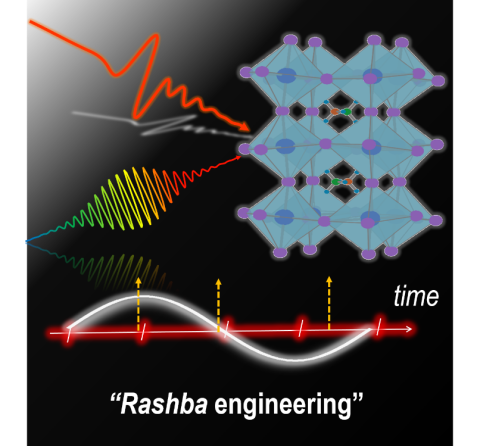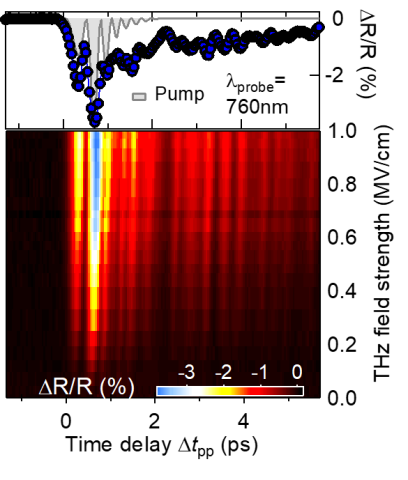

The presence of the momentum- and spin-dependent splitting of electronic bands, known as the Rashba effect in metal halide perovskites, has been an intensely debated mechanism. It underlies the entire field of spintronics, photovoltaics, light emitting diodes and lasers based on this category of revolutionary materials.
Demonstrating the Rashba effect in bulk perovskites settles this debate. This is achieved by detecting “quantum beating” that relate to Rashba electronic bands, i.e., an interference pattern between multiple periodic back-and forth quantum motion of atoms and electrons of slightly different frequencies. This was achieved by employing a single-cycle terahertz pump field which reveals vibronic quantum beats that modulate the dark and bright excitonic fine structure splitting.
The long-lived quantum beats, exclusively from the dark Rashba states, are more than ten times longer than the bright Rashba states. The different coherence times arise from the selective modulation of the Rashba bands by lattice vibrations of two symmetries, i.e., infrared vs Raman. Some beating signals are shown to survive even at room temperature in the form of polarons. By steering quantum motions of atoms and electrons to manipulate the excitonic fine structure splitting, we also achieve “Rashba engineering” of Rashba-type bands.
This is a significant leap for perovskite quantum control, and for spintronic and photovoltaic applications, e.g., spin field effect transistor and ultimate Shockley-Queisser limit of photo-conversion efficiency.
Z. Liu, C. Vaswani, X. Yang, X. Zhao, Y. Yao, Z. Song, D. Cheng, Y. Shi, L. Luo, D.-H. Mudiyanselage, C. Huang , J.-M. Park, R. H. J. Kim , J. Zhao, Y. Yan, K.-M. Ho, and J. Wang “Ultrafast Control of Excitonic Rashba Fine Structure by Phonon Coherence in the Metal Halide Perovskite CH3NH3PbI3l”, Physical Review Letters 124, 157401 (2020). DOI: 10.1103/PhysRevLett.124.157401
And a related paper:
Z. Liu, C. Vaswani, L. Luo, D. Cheng, X. Yang, X. Zhao, Y. Yao, Z. Song, R. Brenes, R. J. H. Kim, J. Jean, V. Bulović, Y. Yan, K.-M. Ho, and J. Wang, “Coherent band-edge oscillations and dynamic longitudinal-optical phonon mode splitting as evidence for polarons in perovskites”, Phys. Rev. B 101, 115125 (2020). DOI: 10.1103/PhysRevB.101.115125
